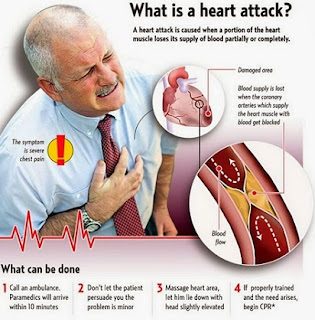I interviewed Susana Robles, the manager of the
service of prevention of labour risks at Concorci
d’Educació de Barcelona. These are the questions that I asked with the
answers that she gave me.
What
does your job consist of?
Our prevention service is composed by a series of
people with the objective of not letting that any worker suffers an accident in
their job. Therefore, our function is to see, from the workstations of the
workers, what the risks are and we have to guarantee that no worker has an
accident at work. Basically, that is the objective of our work.
When
did the emergency drills start applying in the educational centres?
I do not know it with certainty because have worked as
a Consorci since the year 2009, which
is when we entered and managed prevention in educational centres. The
prevention law was created in the year 1995. Since this law was adopted it is
when it is become necessary to apply the whole theme of the emergency plans and
the drill, and at first it is obligatory from that date on. We have worked
since 2009, but earlier it was already being done. Therefore, I can’t tell
since when our service is working, but I think that if the law date back to 1995,
at first it is obligatory from that date on. It is true that before 1995 many
rules were already given to do a drill in the centres, but not in an obligatory
way until 1995.
What
do the centres have to do before doing a drill?
Previously, they have to do what it is called the
emergency plan. The emergency plan is a document that shows which are the
emergencies that can exist in an educational centre and, from here, what to do
in front of an emergency. Then, once you have the emergency plan, which is a
document that explains all this, it is necessary to do the practice of this
emergency plan that are the drills. Therefore, a centre has to begin to do the
drill from doing the emergency plan first.
Who
has to know that a drill will be carried out? Because the pupils can’t know it.
At first, the ideal case would be that only one person
knew it. In practical terms of our schools, we have a coordinator of
prevention, which is a teacher that acquires this figure and is the contact
between the centre and us, the service of prevention of the Consorci. So, normally he (the one that
coordinates the whole drill) and the director of the school know it. It is true
that more often more teachers usually know it, but the idea is that just both
of them have to know it. What does the school normally do? Two weeks before the
drill, they give a talk to the staff and another one to the pupils, and then
they already know that sooner or later the drill will be carried out; but at
first, the exact day and time are only known by the coordinator of prevention
and the director of the educational centre.
What
are the most important aspects for the correct fulfillment of this drill?
I think that first of all, the entire educational
centre has to become aware of the importance of doing a drill in a centre;
therefore I think this would be the first premise. From here on, important
tasks apart from this are: all the teaching personnel, PAS (Personal d’Administració
i Serveis) or workers that take part in the drill and have a charge like
having to call the fire fighters when there is an emergency, to open doors of
the school or other charges like being a broom (what they do is, once everyone
has left, they verify that there is no one left in the building and they
leave). These tasks are the most important, therefore it is very important that
they can do this, bear it in mind and be very aware. I think that this and to
introduce inside each one how important is to do a drill because it could be a
real emergency, are the important points of the initiation of this drill.
Knowing
this, has any centre found problems when making the drill?
What we find in the centres are many doubts. Normally
the prevention coordinators do a formation where they learn all this, but then,
at the moment of the truth when they have to put it into practise, they have
many doubts. So, it is not that there are problems or they have big problems,
because it is not difficult to do a drill, but many doubts appear at the moment
when there is a change or a new person enters. There are always doubts. It
generates work going to advise these centres, but there are not problems as
such; there are everyday doubts like: “Now we have to change the distribution
to know where we have to leave.”, “I am not sure if this is well or not.”... It
is more reaffirming what they have and seeing that it is actually effective to
be able to do the drill and make sure it is successful.
Once
the drill is done, how is it necessary to evaluate?
Once they have done the drill, we give them a card
where they have to fill out certain information, and then they value it
according to this card. Normally, when they do the drill, what they have to see
is, for example, if it is a drill of evacuation in which they have to leave the
building, they have to verify that there is no one left inside and also the
time that they take doing the drill. There is no established time, but it is
true that a building, for example, of 400 people, it would be necessary to
evacuate in two, three or four minutes. If they take the double of this, it
means that something went wrong in the process and then it would be necessary
to revise.
What
is the most important point to do a good drill?
I think everything is important, it is what I have told
you earlier; the centre has to see that doing a drill is important and normally
they see it the other way round, like “It is such a big deal having to stop the
whole school schedule to do this.”. They have to become aware that doing a
drill every year and in a spontaneous way means that later, the day when there
is a real emergency, they will already have it internalized, therefore it is
much easier and faster to do. If they do not do this annual learning, what it
can happen and usually happens is that in front of a real emergency they do not
know what to do and they end up taking more time in evacuating a building. I
think it is a success if we do this every year and we have it internalized,
therefore I think that having it internalized is the basis, and from here on,
continue working.
How
often is it necessary to carry out a drill? Every year as you said?
Yes, it is necessary to do it every year, and in the
last two years it is obligatory to be done in the first trimester of the school
year. This is not to bother anyone, basically it is because when the school
year begins there are new pupils and teachers, substitutes or temporary
workers, so there are new people in the centre. If we do it in the last
trimester, these new people, both pupils and workers, do not know what they
have to do. If in the course of the school year there is a real emergency,
these people won’t know what to do, so that is why it is important to do it in
the first trimester. They arrive to the centre and a month or month and a half
later, both pupils and workers, who more or less already know the dynamic of
the centre; the ideal would be to do the drill in this first trimester. Then you
guarantee the rest of the school year because they already know what they have
to do if there is a real emergency, and it is always necessary to do it at
least once a year. If they do it more than once, better.
To
finish, what are the fundamental stages to follow when the centre decides to
carry out a drill until the result has been valued?
First of all, they develop the emergency plan that I
have told you before that it is the report from which the drill is put into
practice, and they have to update it according to, if they have done an
emergency plan and a drill, they basically change if there has been some
restructuring at structural level of a building. For example, if there have
been works in summer and they have changed classes or tours, it is necessary to
update this emergency plan. Once it is updated, normally what the centres do is
a staff meeting and they explain all the points of the drill: who will do what,
who will call, who will be “the broom”... And once each one already knows what
they have to do, they let some time pass and do the drill. Once the drill is
done, they do this evaluation that I have told you it is the card, and
depending on the parameters, they decide with the card if the drill is
favourable or it is necessary to repeat it. Maybe the centre calls us as a
prevention service to ask for advice on some aspect that is not clear to them.
Normally if there has been some restructuring we are directly going to advise
them, because as the tour of the evacuation has changed or will change, they
need advice. This is in the case of the centres that have been already working
for a long time. When it is a new centre we do the same, the only difference is
that we have the collaboration of the fire fighters of Barcelona, so we call
them and normally one of them comes with us, the prevention service. We go to
the centre and he advises us all about if what we have put or will put into
practise is correct. We normally do this just with the new centres. Some old
centre has asked us sometime for a fire fighters’ advice because they are not
sure enough, and then we also help them, but normally we only help the new
ones.
And
as a question that has just come up to me now, if a centre carried out a drill
and came off badly for whatever reason, and it did it, as you have said, in the
first trimester; would you have to advise them or could they do another one?
Because since the drill went wrong, maybe the pupils or the teachers would not
know what to do if something happened during the school year.
Normally, when we say that it goes wrong is because,
for example, in some floor of the building there is someone left inside.
Someone in the toilet that has not realized or some teacher in some department
that has not heard the emergency alarm. Apart from this, it might go wrong if
some of the tours of evacuation are stopped up and then they take too much time
to leave. Then, because of this, they normally ask us for advice because there
is something that does not work, so we go and they do the drill again. Normally,
it is like this.






































